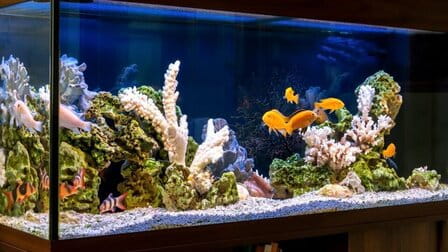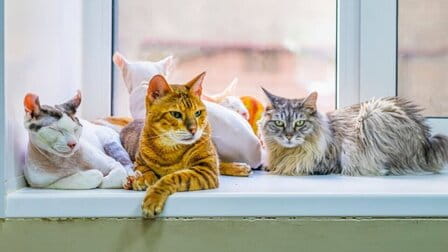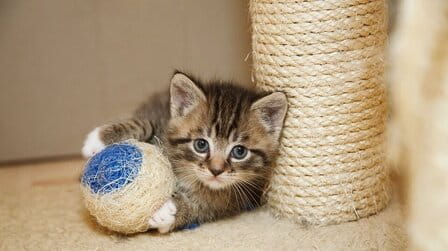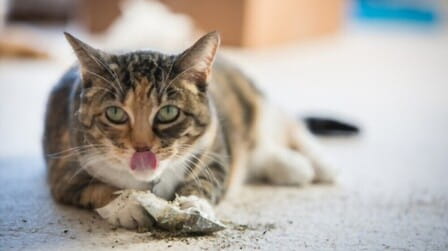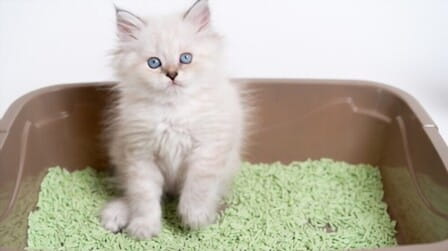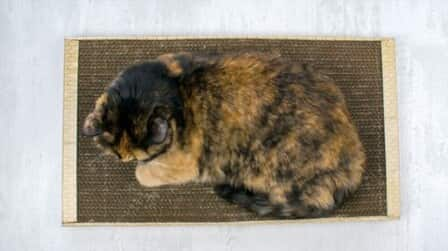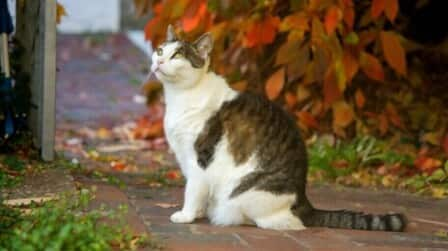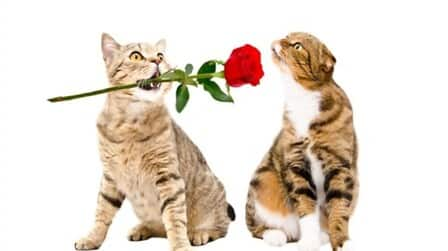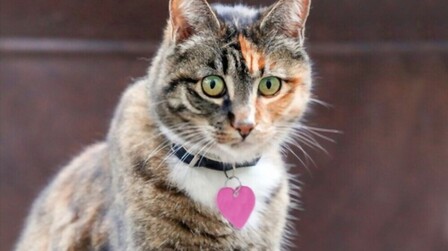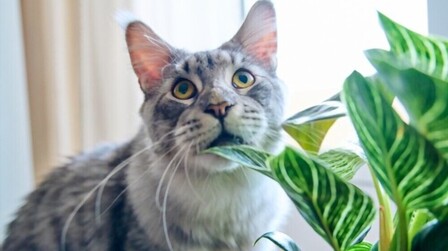Cat eye colors are always a fascinating idea to validate, especially regarding the question of how rare your cat eye's color is. As a pawrent, you must be eager to discover all the cat eye colors in the world, from the most popular to the unique ones. We shall let you wait no longer and dig right into this topic. In the below article, you are likely to discover the following:
- Factors affecting cat eye final colors
- 8 eye colors of a cat with pictures and rarity explained

What Are Cat Eyes’ Colors Linked to?
Cat eyes are not fully developed until the kitty reaches the age of 12 weeks. Whatever color you have seen before this milestone might not be the final color. So speaking more of it, what exactly affects your little mate's eye colors?
Some would say it is the genre that does the work. Others may assume the factors influencing eye colors are environments and breeding. As a matter of fact, none of them give the wrong ideas, however, they are not specific enough.
Here are the three elements that impact cat eye color most: iris pigmentation, blue reflection, and breeding. We will focus on the first 2 factors because they are the most significant to affect.
Let's keep the explanation brief and comprehensive.
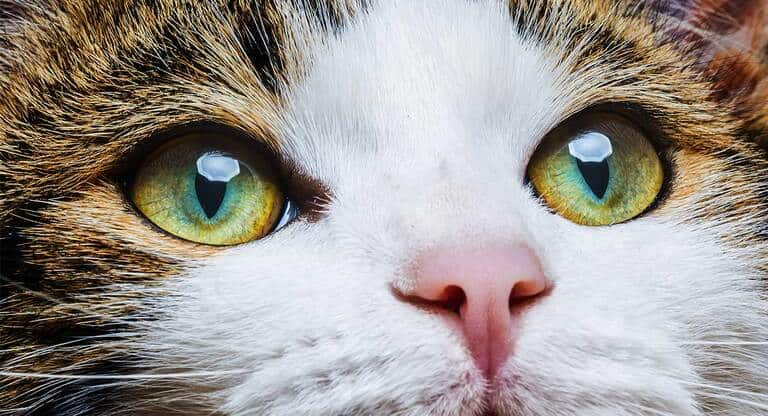
Iris pigmentation: This is responsible for different colorations. It divides into two layers, among which the base one contains melanocytes (specialized pigment-produced cells). The melanocytes produce melanin, which decides the darkness and intensity of the final color. As more melanin is produced, the darker the cat's eye colors will become eventually.
On the other hand, the outer layer of iris pigmentation is called the stroma. Unlike the base layer, which decides the darkness and intensity of the final color, stroma relates to clear colors and may vary their tones from light blue to deep blue or violet.
Blue reflection: Mature cat eye colors are the results of iris pigmentation variations and blue reflection. If your cats have blue eyes, it should be the result of light refracted by stroma. Also, don't forget about the melanin levels produced.
Last but not least, even though the breed is listed as one of the decision-makers in cat eye colors. Nonetheless, breeding only becomes the last shot-caller in some cases. In many situations, two little fellows from the same parents can have highly distinguished eye colors.

8 Cat Eye Colors And Their Rarity Explained
Now, it is time to take a glance at the 8 cat eye colors and their rarity decided!
Amber and Yellow eyes
Amber and yellow eyes are probably the most common cat eye colors. You can catch sight of these eye colors in numerous cat breeds such as Bengals, American Shorthair, British Shorthair, and so on. The explanation for the color variations has been provided in our previous section.
Based on their melanin levels, the yellow or amber intensity can increase from one to another. Our experts would say the rarity of yellow or amber eye colors stands firmly from 1 to 2 on a scale of 10. Despite its popularity, you are likely to be impressed by the Burmese striking golden eyes.
Hazel eyes
Hazel eyes are just a bit rarer than yellow or amber ones. They have almost the same colorations as the two mentioned. The hazel color comes as a combination of green and golden yellow. Whether they are rare or not, many pet owners fancy the hazel eye color.
According to surveys, the hazel eye color is commonly seen in wild cats that live in temperate regions (including Lynx and Bobcats), as well as feral cats.
For domestic cat breeds, you might have seen a Bengal, Scottish Fold, Abyssinian, or Cornish Rex with hazel eyes. Our rarity conclusion for hazel eyes is 2 out of 10.

Green eyes
Green eyes are many's favorites because they are surely exciting to glance at, whether it is a human being or your adorable little mate. Green eyes in cats are not the rarest color, however, they still get some recognition as a pretty and "unique" eye color.
The most seen green-eyed cats, which you might have come across before, are Egyptian Mau or Russian Blue cats. These little fellows have vivid green eyes, and they certainly can melt your heart because of their cuteness.
Overall, we rate the green cat eye color to be 5 out of 10, in terms of the rarity scale.

Blue eyes
Blue-eyed kittens must be one of the cutest little creatures you have ever met! This cat eye color is definitely a rare one, and many pet owners must admit some aqua-blue or vivid blue eyes are just breathtaking to gaze at. To have a blue-eyed kitty, you must pay close attention to the breed and the parents. Genetics does play a huge role when it comes to eye colors, withstanding the factors we mentioned earlier.
The blue cat's eye color varies from the most popular domestic cat breeds to the opposite. Some cats you may see with a blue pair of eyes are American Shorthair, British Shorthair, Maine Coon, Ragdoll, and so on.
The rarity for this cat's eye color is 6 on the scale of 10.

Orange eyes
Believe it or not, orange cat eye color is among the rarest ones for a kitty. While orange eyes can sometimes be difficult to spot when we place them among yellow or hazel eyes, they are by no mean similarity. This case is especially true for those cats with vivid orange eyes. They are unique, mystic somehow, and outstanding for sure.
Not every cat breed can have orange eyes. Here are some of the breeds that may have a pair of exciting orange eyes: Maine Coon, Devon Rex, and Turkish Van. for this beautiful cat eye color, we would give it an 8 out of 10.

Copper eyes
Copper eye color is a little more special than all of the mentioned ones because it is a combination of orange, a bit brown, and occasionally red. These eyes are sometimes compared to the scene of the sunset coming down, which is gorgeous to look at.
The gorgeous copper eyes are often seen in Cornish Rex, Maine Coon, Persian, and even British Shorthair. For all of its uniqueness and beauty, the copper cat eye color deserves an 8 on a scale of 10.

Odd-colored eyes
Among the final types of cat eyes, we would love to introduce an extraordinary one, which is the odd-colored eyes. These are a strange combination of genetics and body-structure factors. They are indeed not from genre and parent solely but the variant in their eye structure as well. Whether the variant is an accident or not, the odd-colored eyes make an incredible case for cats, in general.
Such unique eyes are most popular in Persian and Japanese Bobtail. For the rating part, a 9 would be appropriate for the odd-colored eyes.
Dichroic eyes
Last but not least, let's discover the rarest type of cat eye color. It is the Dichroic eyes, which are randomly witnessed in any cat, regardless of their breed because the color itself is a one-of-a-kind variant. The dichroic color is explained as there are two colors in each eye of your kitten. This is not an everyday story, and it is so rare that you can barely see it anywhere.
Without a doubt, we give this type of cat eye color a 10 out of 10 for its rarity. And if you are lucky enough, maybe your future little fellow can have those amazing eye colors!

Conclusion
That's everything we have got for the topic of types of cat eye colors. This is absolutely an interesting discussion for pet owners and those who adore the cuteness of cats. However, the types of cat eye colors are not the only interesting topics we talk about. Hence, don't forget to check our other articles and stay tuned for the latest news!


